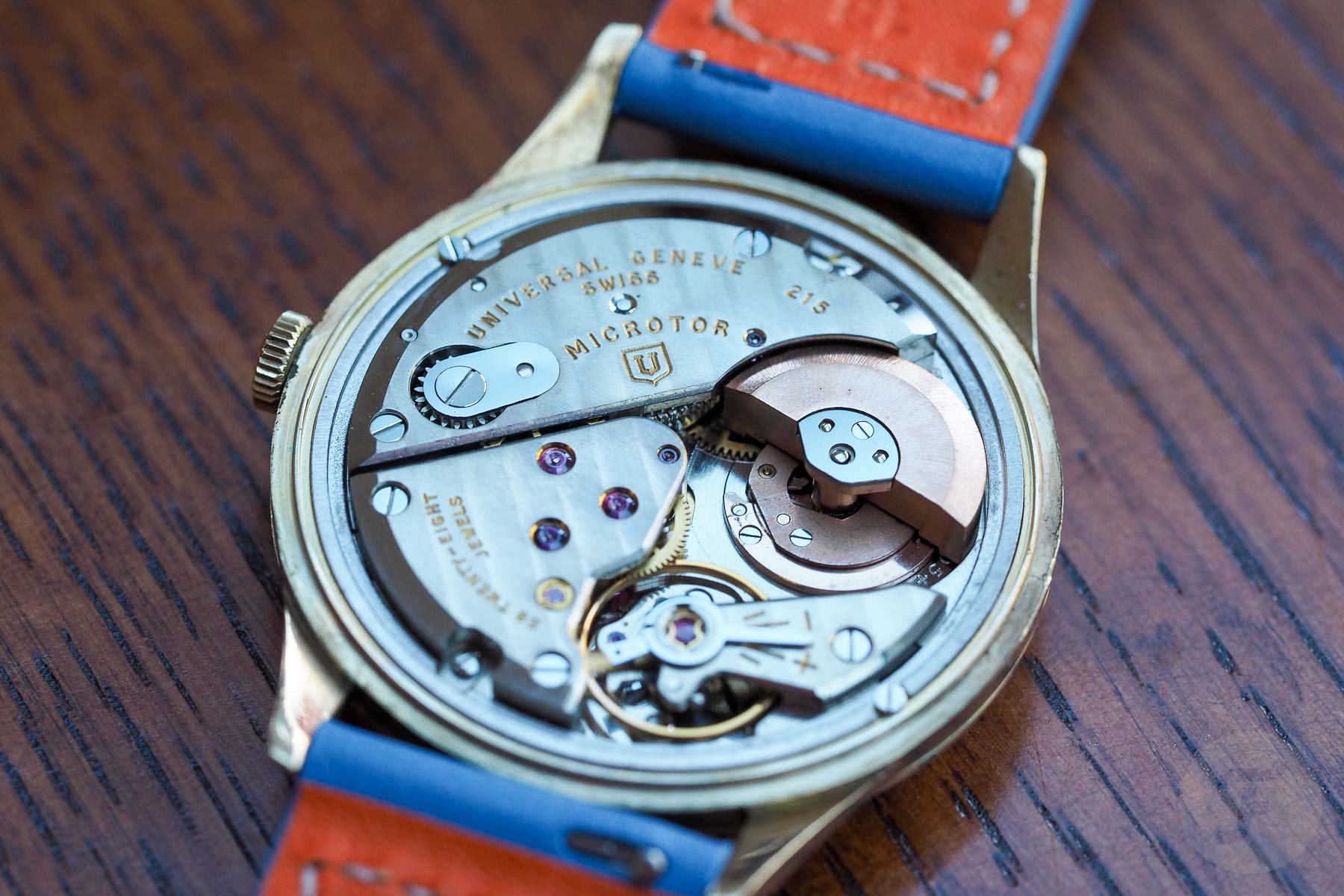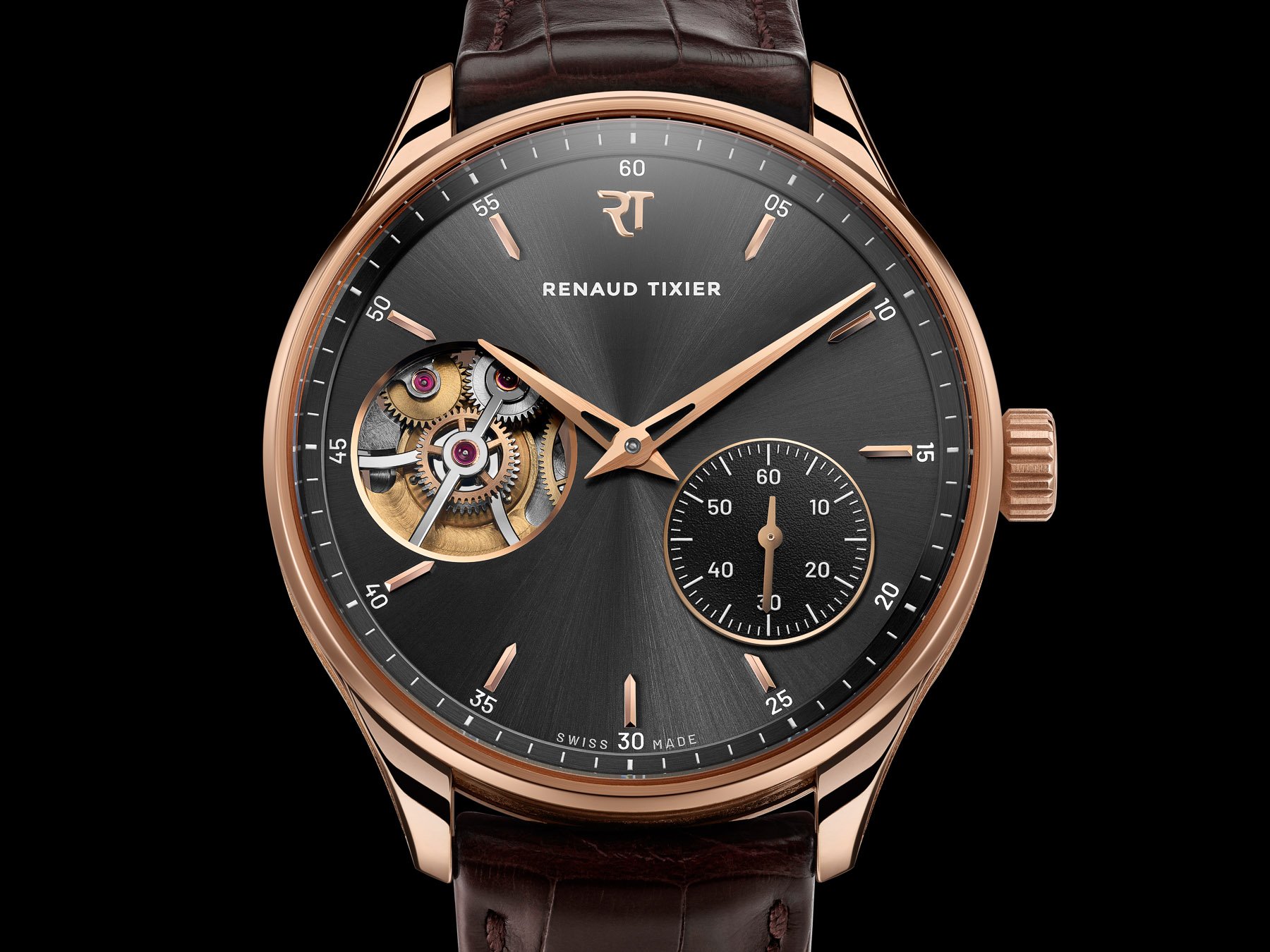Reinventing The Micro-Rotor: Renaud Tixier Makes A Mechanically Innovative Debut
Some 25 kilometers north of Geneva, on the shore of the city’s eponymous lake, lies the town of Nyon. This is the place that Renaud Tixier, the latest Swiss independent watch brand launching today, calls its home. It’s the latest collaborative effort between Dominique Renaud — the renowned watchmaker and co-founder of Renaud & Papi — and the talented up-and-comer Julien Tixier. The project’s ambition is to revisit and reinvent seven different principles of horology, applying the pair’s creativity and know-how in a quest for mechanical innovation. This is a major claim for a brand to make on the day of its inception. But if you understand exactly who stands behind it, expectations should indeed be high. The brand’s debut watch, simply named the “Monday,” debuts today and already proves there’s good reason to get excited.
It’s worth noting that this is not Dominique and Julien’s first time teaming up. Readers might remember that the pair worked together to create the remarkable Furlan Marri Secular Perpetual Calendar. Before that, they collaborated on the equally impressive GPHG-nominated DRT Tempus Fugit. Both of these projects were equal parts ambitious and innovative, showcasing their impressive watchmaking chops and drive. The relationship is formalized today, and a new independent Swiss brand has been born. Renaud Tixier (the watchmaking duo’s namesake brand) has launched its first effort to improve a staple of watchmaking that has been around since the mid-1950s — the micro-rotor.
A collaborative project
Dominique Renaud is a famous name in the Swiss watch industry. He is best known as a former Audemars Piguet watchmaker who co-founded the movement manufacturer and developer Renaud & Papi alongside Giulio Papi in 1986. The company, later purchased by AP, has made a notable impact thanks to its numerous contributions to the watch industry. You can read more about it here.
Born in 1993, Julien Tixier has already made quite a name for himself. Calling him an up-and-comer is common practice, but it surely won’t be for much longer. Having also been dubbed “one of the finest watchmakers of this generation,” Tixier has a well-earned reputation. You can read more about him and his development as a watchmaker here.
The Renaud Tixier Monday is the first of seven projects the brand aims to tackle. Whether the decision to name each one after a day of the week came after long hours in the atelier listening to The Cure’s 1992 single “Friday I’m in Love” or not is something we can only speculate on. Regardless, it provides a good framework for the brand’s project. The two men boast decades of watchmaking expertise and share a taste for innovation. In their words, they aim to “re-think the fundamentals of micromechanics and apply innovative concepts to fundamental watchmaking principles that have been taken for granted and often remained unchallenged.” But don’t expect rough prototypes. The idea is to create movements that are not only mechanically stunning but also aesthetically so.
But they do not intend to keep these to themselves. Though Renaud Tixier’s creations will be limited, the wider enterprise behind the brand will look to expand and open its doors to working with third parties, sharing their expertise and partnering with them in development and production.
Reinventing the micro-rotor
Though it has been disputed which brand was first, Universal Genève and Buren pioneered micro-rotor technology in watchmaking. Over time, these miniature oscillating weights became a staple of high horology. This is because they allow calibers to be thinner and obstruct fewer components, providing better views of the movements. If you’d like to read more about the history of the automatically winding watch, including the early days of the micro-rotor, I highly recommend you check out Brandon’s extensive piece on the subject.

Mike’s Universal Genève Microtor
But why does the micro-rotor require reinvention? Well, tiny rotors have never been the best at fully winding a watch effectively. Due to the reduced mass and distance from the pivoting point, they struggle to create enough force to overcome the mainspring’s torque even at partial capacity. Micro-rotors are also more delicate, and their construction is far more complex. Dominique Renaud set his sights on solving the issue. The first step was to identify its source outside the aforementioned mechanical limitations.
As it turns out, the amplitude of movement required for the micro-rotor to function properly and the small, jolting movements we naturally subject them to in everyday wear are not ideally compatible. In fact, they often stop the rotor altogether. Renaud had to find a way to harness even the smallest movements and have them contribute to the rotor’s winding. And he set out to do so the watchmaker’s way — relying on micromechanics and working within the limited space available to him. As it turns out, this was the inner perimeter of the rotor itself.
An elegant solution
What Dominique Renaud envisioned as a solution could best be described as a propeller powered by a specially designed spring. This construction, which he nicknamed the “dancer,” was built into the rotor and serves two functions. The first is as an “engine,” ensuring that the micro-rotor gets a boost of energy (using a spring and flywheel). The second is a shock absorber, further protecting this otherwise delicate construction from harsh shocks. The brand explains the rather complex way in which it operates as follows:
“A large spiral connects the central axis to the innovative mechanism, acting as a catapult. Another spring arm extends from the axis in the opposite direction: a kind of foot with a heel, which hits a stop in the event of a severe shock, serving as the shock absorber. On the axis, the spring operates like a notched clamp, with an upper jaw shaped like a hanger. This hanger acts as an active safety device: it is rigid under normal conditions and secures the flywheel to the axis. In the event of a shock, the foot hits the stop and presses on the hanger, which disengages from the axis and the repositions once the shock has passed and stored energy is released.”
Tixier stepped in, treading into unmapped watchmaking territory, turning theory into reality. First, he created a large-scale mechanism model, then a watch prototype. But was the quest successful? Well, again, in the brand’s words: “On the model, there is no doubt that the mechanism enhances the efficiency of the micro-rotor. This improvement is expected to be confirmed by the watch prototype. By how much? It is too early to say: no existing control tool is capable of quantifying the difference it will make.“
The Renaud Tixier Monday
So far, we’ve focused on the watch’s impressive mechanical attributes and potentially groundbreaking innovation. But what are the characteristics of the watch itself? The Renaud Tixier Monday features a classically styled 40.8mm 5N+ rose gold or white gold case with deeply textured, hand-engraved ridges along its sides. The watch is 11mm thick and has sapphire crystals on both the front and back. It has a 30m water resistance rating and will be delivered on either a calfskin or alligator strap in black, chocolate, or navy blue with matching stitching and a pin buckle made of the same gold as the case. Its sunburst dial comes in either silver or dark gray. An applied logo and nine applied markers match the case’s gold alloy, as do its lightly skeletonized, slim dauphine hands. A slightly raised rehaut holds the white minute track on the dial’s perimeter.
Other notable features include a graduated small seconds sub-dial with a rose gold frame at 4 o’clock and an opening to the movement’s micro-rotor at 9 o’clock. On the back, a slim outer ring surrounding a sapphire crystal is held in place with seven screws. This offers a full view of the stunning RTVI2023 movement. This caliber is the work of Julien Tixier’s artisanal watchmaking. Opposite the keyless works, you’ll see the supercharged micro-rotor with its crescent-moon-style bridge. To the lower left of that is the palladium-spring-equipped balance. As you might imagine, this caliber is finished and decorated to the highest degree possible. This includes hand beveling, black-polished titanium, and a mainspring cover featuring hand engraving and Grand Feu enamel. It offers 60+ hours of power reserve and consists of 315 components, including 30 jewels.
Final thoughts
As you might imagine, this work of artisanal watchmaking has a price tag to match its ambitions. The price is estimated to be about CHF 79,000 (roughly €83,300 or US$89,750) before taxes. I find it comparable to someone who worked for a car brand like Pagani or Koenigsegg creating a brand and offering a concept car for sale. There will be an audience out there, but for me, it’s something I can admire for the project’s spirit and ambitions alone. It’s also exciting to see a big name in the industry re-establish a space for creative development and artistry. But will Renaud Tixier be able to fill the shoes of Renaud et Papi? Only time will tell.
In terms of production output, the brand estimates that only 62 watches will be produced in total. Renaud Tixier will employ the aid of two additional watchmakers, who are currently in training for the task. Monday is the first of seven such projects, meaning that we’ll be keeping a close eye on what the Nyon-based brand gets up to next. But before that, we’ll have a chance to visit the atelier for a hands-on review of the watch and to learn more from Dominique and Julien. To follow along with Renaud Tixier’s upcoming developments, check out the official website and follow the brand on Instagram.

















